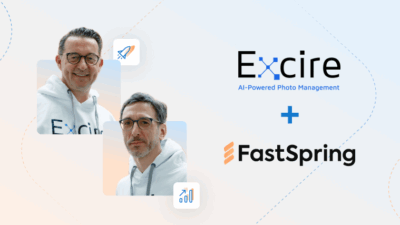To be a master B2B SaaS account executive, you have to learn to navigate people, relationships and the industry.
More often than not, the pressure of a business’s success falls on the account executive’s (AE) shoulders since it’s their job to bring in clients.
Although maybe unfair, it’s the reality of the job. But there are certain things you can focus on in order to best connect with prospects and make the most of your time.
The 5 Must-Know Strategies
As an AE, there are certain things you need to be a master at:
Understanding what your buyers actually need.
The buyer can often have a perception of what is valuable to them but the best account executives are able to position open-ended questions that drill into the real pains and uncover previously unknown insights. In sum, identifying the nuance between what the buyer thinks they need and what they actually need.
You are not a bad sales rep if you uncover that they don’t actually need your solution.
If anything, the best reps are able to quickly and politely let prospects know that it’s not a fit.
Both prospects and AEs would prefer to part friends early in the sales cycle rather than a long, drawn-out process. Remember, industry average SQO to close rates usually lie between 20-30%.
Creating trust and rapport with the prospect is crucial.
In today’s sales world, prospects are HIGHLY educated and will heavily research your solution even before engaging with you. Sites like G2 Crowd and TrustRadius make this process easy.
It’s crucial that you don’t tell them something that counters to their research until that trust is built. The real gold medal is if you can understand their business and position new insights that they weren’t even aware of… and these don’t all need to be related to your product/service.
Imagine if you could add value for your clients beyond just making the sale.
Surface any barriers/red flags that might be an obstacle.
Things like additional stakeholders, budget constraints, security reviews, etc.
Preparing for and identifying possible barriers is the majority of the battle. Laying down the groundwork for an open and transparent relationship with the client is essential to this.
Without transparency from your client, you can be left in the dark on developments within their business and find yourself at a loss because of it.
Educate. Provide valuable third-party resources in addition to your own throughout the sales cycle.
As mentioned, we are now in the age of the informed consumer, where the buyer is already educated on a product before even speaking with a sales rep.
This is where your advocates come into play.
As we explained in the Closing your qualified opportunities blog post, connecting prospective buyers with other customers/clients can have a large impact on a prospects decision to buy.
On top of this, you should guide them towards other third-party sources, such as reports from sites like Forrester and Gartner. Content from credible sources in the B2B SaaS industry not written by your business is key, as it will lack any bias coming from your perspective.
Establishing an up-front contract.
Use this to create your goals for the buying process. What are the buyers milestones for evaluating the product/solution? What are your milestones for the buying cycle?
An up-front contract is an oral agreement made between the buyer and seller that levels the playing field and establishes what they both expect of each other during the sales process.
It can also be a valuable tool to determine whether a prospect is actually a fit for your product. As soon as you meet with a potential buyer, you should agree to ask each other a few questions.
Instead of launching into a 45-minute monologue on how your product will change their life, determine if they will benefit from your product. If the answer is no, end the conversation there, saving both you and the prospect time and money.
To recap…
To be a master B2B SaaS account executive, you need to: understand what your buyers actually need, create trust and rapport, surface potential red flags, educate the buyer, and establish an up-front contract.
Being an AE is tough at times, but can be very rewarding when you finally close those hard earned deals. Still looking for more? I would recommend taking a look at the books Let’s Get Real or Let’s Not Play by Mahan Khalsa and The Challenger Sale by Matthew Dixon & Brent Adamson. Also, check out our blog post on the best SaaS sales books.
![[Customer Story] Why TestDome Considers FastSpring a Real Partner](https://fastspring.com/wp-content/themes/fastspring-bamboo/images/promotional/2023/FastSpring-TestDome-blog-thumbnail.jpg)








